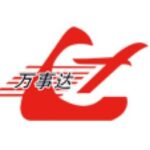Company RUSAL will continue to work in Ukraine
The largest Russian aluminum company RUSAL will continue to work in Ukraine and has no plans to close its alumina plant in Ukraine Nikolaev, though he believes this asset is one of the most inefficient. About it journalists were reported today by the owner of the group "Basic element" and President of "RUSAL" Oleg Deripaska.
"In Ireland we plant about the same power, and gas for him we buy for the price of 200 US dollars (per thousand cubic meters), in Nikolaev at 340 U.S. dollars. It makes its products the most expensive in the system (RUSAL)," said Deripaska.
At the same time, the President of RUSAL said that the political crisis in Ukraine did not affect the activities located in the country of enterprises. The company believes that in the near future gas prices will be cheaper and the economic performance of the Nikolaev alumina refinery to improve.
"Close, we don't intend to. We have too much invested in the enterprise and its staff, and the plant is an important part of our company", said Deripaska.
The company has previously reported that the conserved part of the production capacity of aluminium at 650 thousand tons to maintain an optimal ratio of demand and supply in the market. The capacity of the Nikolaev aluminous plant is 1.6 million tons of alumina per year. The company employs about 1.5 thousand people.
In addition to this asset in Ukraine, RUSAL has the Zaporozhye aluminum combine (ZALK), which is idle since 2011. The company reported that ZALK, in connection with high tariffs for electricity, which led to the loss of the company, mothballed the smelter production in April 2011 and started production of aluminum rod, which was also stopped.
In November last year, the territory of the plant was blocked by soldiers of the volunteer battalion "Aydar", demanding to nationalise ZALK. 23 December 2014, Ukraine's Supreme court has maintained in force the decision of the Supreme economic court regarding the return to the state of 68.01 percent stake in Zap.
On February 26 in Dnipropetrovsk court of appeal granted the appeal of the Prosecutor of Zaporozhye region and quashed the decision of the Zaporozhye regional court on liquidation of PJSC "Zaporozhye production aluminum combine", agreeing with the Prosecutor's position regarding the lack of legal grounds for a compulsory stop of activity of the enterprise.
